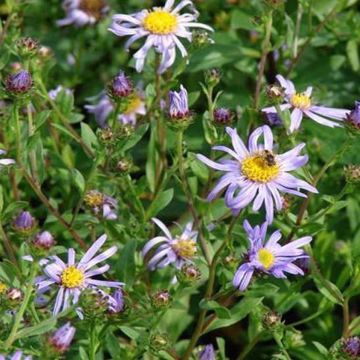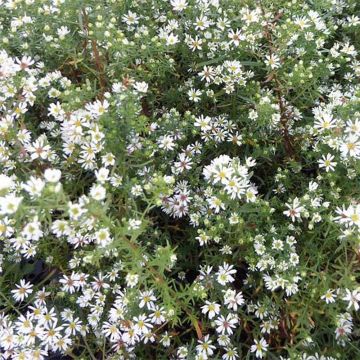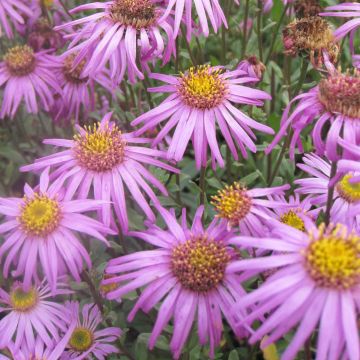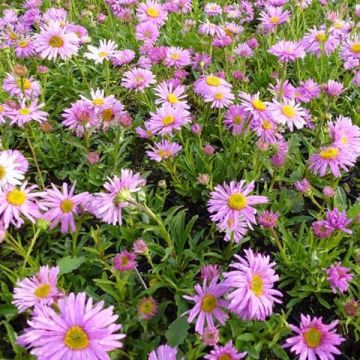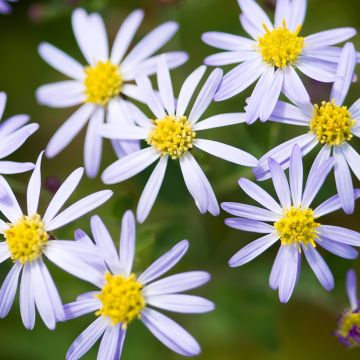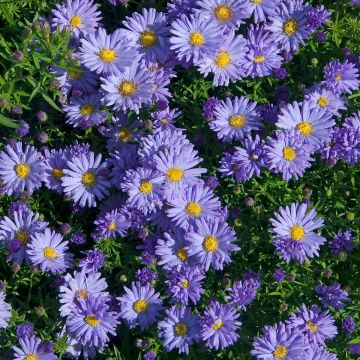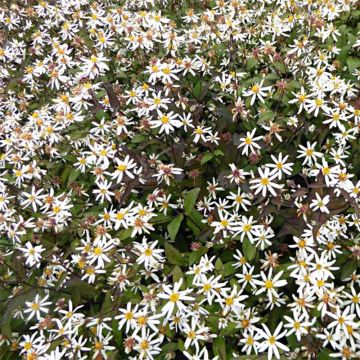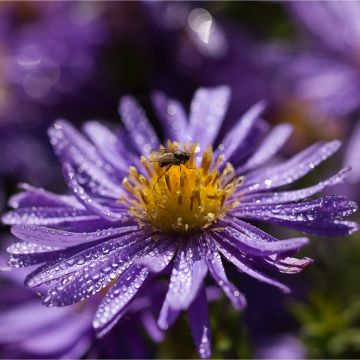

Aster dumosus Silberblaukissen
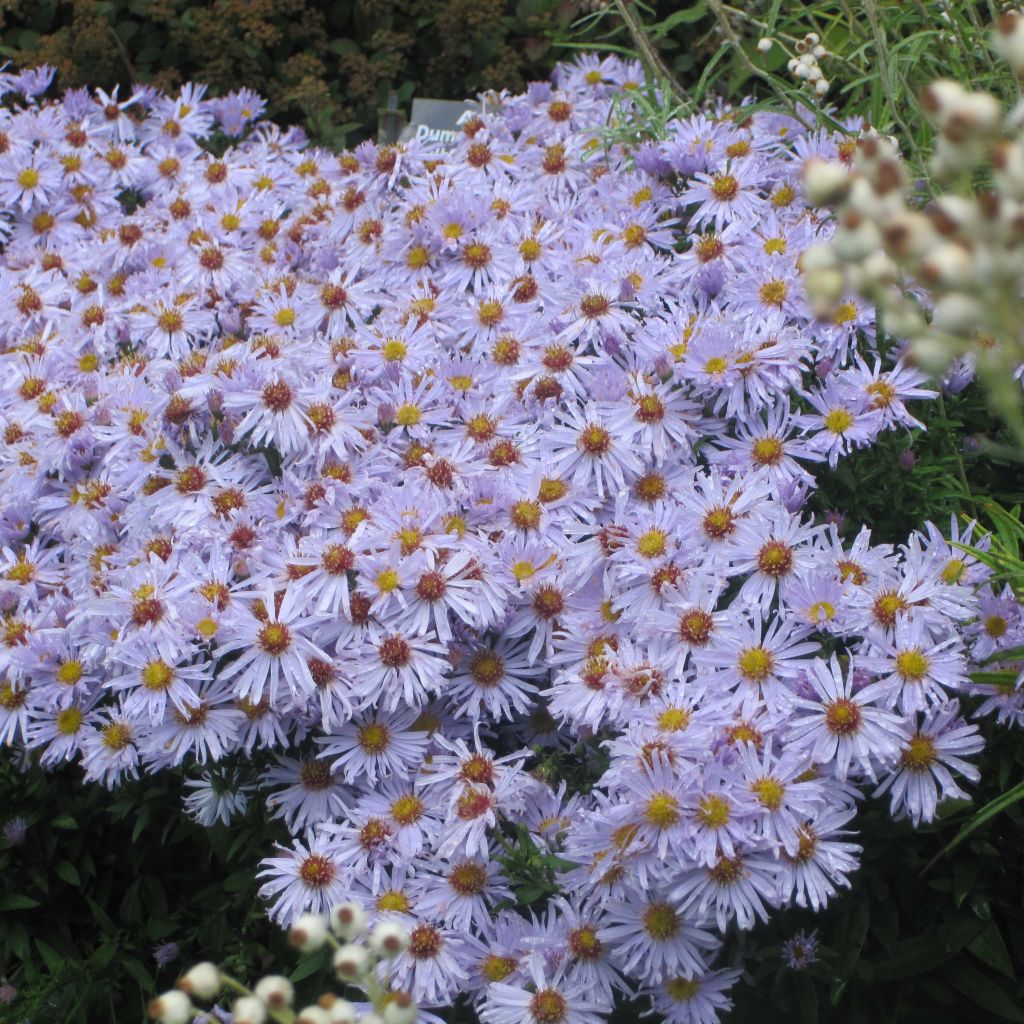

Aster dumosus Silberblaukissen


Aster dumosus Silberblaukissen


Aster dumosus Silberblaukissen
Aster dumosus Silberblaukissen
Aster dumosus Silberblaukissen
Michaelmas Daisy, Dwarf aster
Ordered earlier this year, the plant got hidden under annuals but after a bit of cleaning, I was surprised to see flowers this autumn - I wasn't expecting that anymore.
Sarah, 16/10/2024
Special offer!
Receive a €20 voucher for any order over €90 (excluding delivery costs, credit notes, and plastic-free options)!
1- Add your favorite plants to your cart.
2- Once you have reached €90, confirm your order (you can even choose the delivery date!).
3- As soon as your order is shipped, you will receive an email containing your voucher code, valid for 3 months (90 days).
Your voucher is unique and can only be used once, for any order with a minimum value of €20, excluding delivery costs.
Can be combined with other current offers, non-divisible and non-refundable.
Home or relay delivery (depending on size and destination)
Schedule delivery date,
and select date in basket
This plant carries a 12 months recovery warranty
More information
We guarantee the quality of our plants for a full growing cycle, and will replace at our expense any plant that fails to recover under normal climatic and planting conditions.

Would this plant suit my garden?
Set up your Plantfit profile →
Description
Aster dumosus 'Silberblaukissen' is a robust perennial. Between August and October, it transforms into a cushion of pale-blue flowers with silver reflections and yellow hearts, reminiscent of small daisies. The more or less trailing stump emits ramified stems, adorned with lanceolate, dark green and glossy leaves. It is a plant with a compact and sturdy habit, ideal for replacing summer perennials, in pots or borders.
Asters belong to the Asteraceae family, which mainly consists of herbaceous plants. Aster dumosus 'Silberblaukissen' is a medium-sized hybrid derived from Aster dumosus or New York Aster, native to the eastern half of the United States, from Texas to Florida, Maine and Wisconsin. This 50cm (20in) aster brings the garden to life in late summer and early autumn, covering its foliage with small pale-blue heads with yellow centres. The robust, dark green foliage is deciduous and composed of linear leaves, sometimes affected by powdery mildew.
Aster dumosus 'Silberblaukissen' thrives in sunny or slightly shaded positions in all rich and moist soils, even slightly dry ones. It is perfect for creating charming autumn scenes. Easy to grow, its 40 to 50 cm (16 to 20in) habit allows for the creation of colourful patches, combined with golden or coppery grasses , tall Sedum spectabile and heucheras in shades of purple. Its cousins, the chrysanthemums, enrich the beds of asters with vibrant colours, pink, purple, orange or white. Aster dumosus 'Silberblaukissen' also elegantly adorns rockeries, borders, or pots placed on window sills. It attracts many butterflies.
The genus Aster offers a large number of species, which themselves come in a wide variety of flowering varieties. They come in all sizes, with an extremely rich range of colours. Each season, there are several species to choose from, including Aster alpinus or A. tongolensis for spring asters, A. amellus or A. frikartii for summer asters, and A. cordifolius, A. dumosus, A. ericoides, A. lateriflorus, A. novae-angliae, or A. novi-belgii for autumn asters.
Report an error about the product description
Aster dumosus Silberblaukissen in pictures
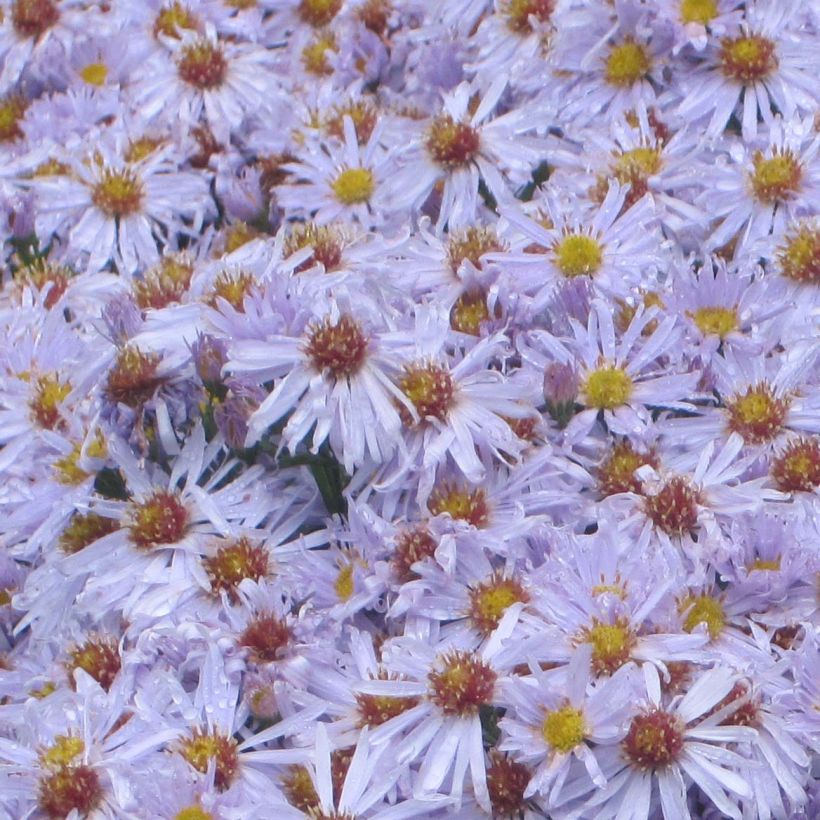

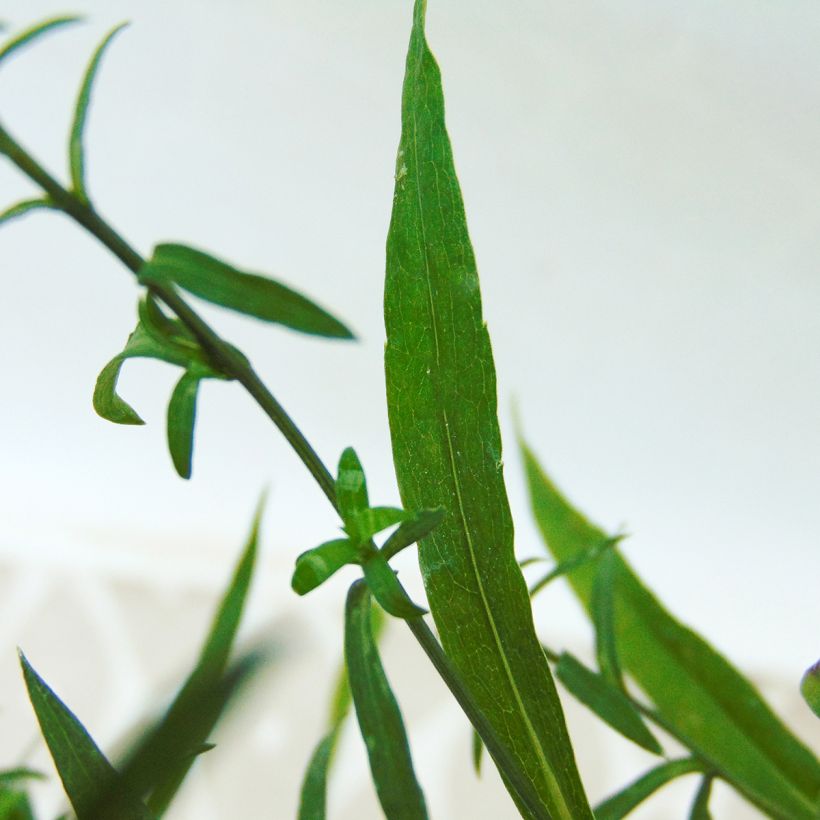

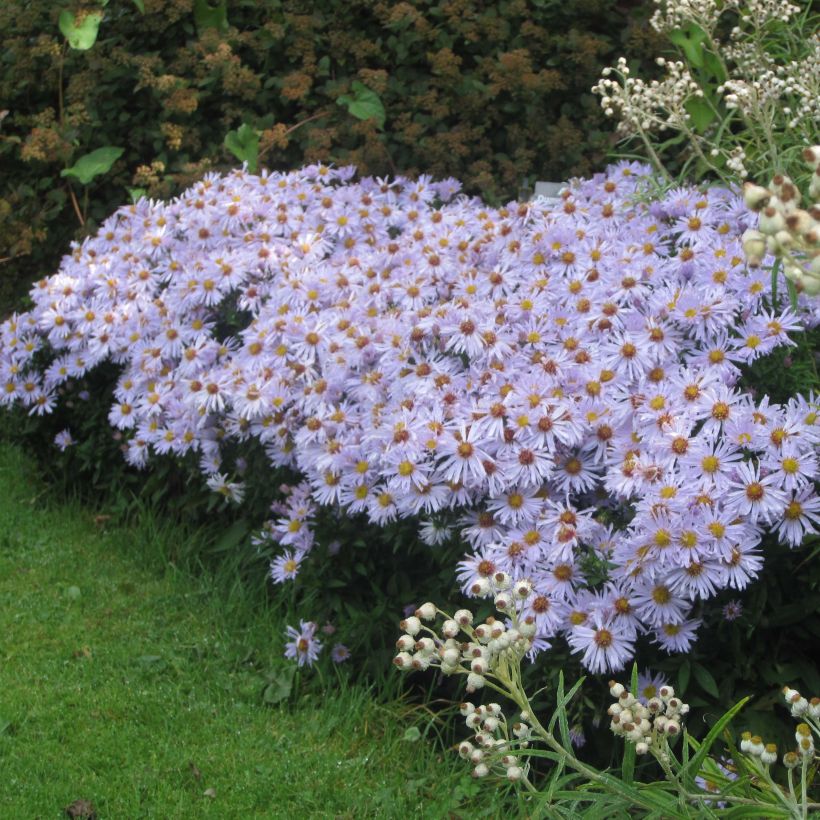

Flowering
Foliage
Plant habit
Botanical data
Aster
dumosus
Silberblaukissen
Asteraceae
Michaelmas Daisy, Dwarf aster
Symphyotrichum dumosus
Cultivar or hybrid
Other Asters
View all →Planting and care
Plant in autumn or spring in a flower bed or border, in rich soil that is not too dry or wet. It prefers a sunny exposure but can tolerate partial shade. In a flower bed, leave at least 40cm (16in) between each plant. Mulch the soil from the end of spring and water in case of drought, being careful not to wet the foliage to limit the appearance of powdery mildew to which asters are susceptible. At the end of flowering, cut back the clump to 10cm (4in). Divide the clumps every 2 to 3 years to maintain vigorous plants that are more resistant to powdery mildew.
Planting period
Intended location
Care
-
, onOrder confirmed
Reply from on Promesse de fleurs
Haven't found what you were looking for?
Hardiness is the lowest winter temperature a plant can endure without suffering serious damage or even dying. However, hardiness is affected by location (a sheltered area, such as a patio), protection (winter cover) and soil type (hardiness is improved by well-drained soil).

Photo Sharing Terms & Conditions
In order to encourage gardeners to interact and share their experiences, Promesse de fleurs offers various media enabling content to be uploaded onto its Site - in particular via the ‘Photo sharing’ module.
The User agrees to refrain from:
- Posting any content that is illegal, prejudicial, insulting, racist, inciteful to hatred, revisionist, contrary to public decency, that infringes on privacy or on the privacy rights of third parties, in particular the publicity rights of persons and goods, intellectual property rights, or the right to privacy.
- Submitting content on behalf of a third party;
- Impersonate the identity of a third party and/or publish any personal information about a third party;
In general, the User undertakes to refrain from any unethical behaviour.
All Content (in particular text, comments, files, images, photos, videos, creative works, etc.), which may be subject to property or intellectual property rights, image or other private rights, shall remain the property of the User, subject to the limited rights granted by the terms of the licence granted by Promesse de fleurs as stated below. Users are at liberty to publish or not to publish such Content on the Site, notably via the ‘Photo Sharing’ facility, and accept that this Content shall be made public and freely accessible, notably on the Internet.
Users further acknowledge, undertake to have ,and guarantee that they hold all necessary rights and permissions to publish such material on the Site, in particular with regard to the legislation in force pertaining to any privacy, property, intellectual property, image, or contractual rights, or rights of any other nature. By publishing such Content on the Site, Users acknowledge accepting full liability as publishers of the Content within the meaning of the law, and grant Promesse de fleurs, free of charge, an inclusive, worldwide licence for the said Content for the entire duration of its publication, including all reproduction, representation, up/downloading, displaying, performing, transmission, and storage rights.
Users also grant permission for their name to be linked to the Content and accept that this link may not always be made available.
By engaging in posting material, Users consent to their Content becoming automatically accessible on the Internet, in particular on other sites and/or blogs and/or web pages of the Promesse de fleurs site, including in particular social pages and the Promesse de fleurs catalogue.
Users may secure the removal of entrusted content free of charge by issuing a simple request via our contact form.
The flowering period indicated on our website applies to countries and regions located in USDA zone 8 (France, the United Kingdom, Ireland, the Netherlands, etc.)
It will vary according to where you live:
- In zones 9 to 10 (Italy, Spain, Greece, etc.), flowering will occur about 2 to 4 weeks earlier.
- In zones 6 to 7 (Germany, Poland, Slovenia, and lower mountainous regions), flowering will be delayed by 2 to 3 weeks.
- In zone 5 (Central Europe, Scandinavia), blooming will be delayed by 3 to 5 weeks.
In temperate climates, pruning of spring-flowering shrubs (forsythia, spireas, etc.) should be done just after flowering.
Pruning of summer-flowering shrubs (Indian Lilac, Perovskia, etc.) can be done in winter or spring.
In cold regions as well as with frost-sensitive plants, avoid pruning too early when severe frosts may still occur.
The planting period indicated on our website applies to countries and regions located in USDA zone 8 (France, United Kingdom, Ireland, Netherlands).
It will vary according to where you live:
- In Mediterranean zones (Marseille, Madrid, Milan, etc.), autumn and winter are the best planting periods.
- In continental zones (Strasbourg, Munich, Vienna, etc.), delay planting by 2 to 3 weeks in spring and bring it forward by 2 to 4 weeks in autumn.
- In mountainous regions (the Alps, Pyrenees, Carpathians, etc.), it is best to plant in late spring (May-June) or late summer (August-September).
The harvesting period indicated on our website applies to countries and regions in USDA zone 8 (France, England, Ireland, the Netherlands).
In colder areas (Scandinavia, Poland, Austria...) fruit and vegetable harvests are likely to be delayed by 3-4 weeks.
In warmer areas (Italy, Spain, Greece, etc.), harvesting will probably take place earlier, depending on weather conditions.
The sowing periods indicated on our website apply to countries and regions within USDA Zone 8 (France, UK, Ireland, Netherlands).
In colder areas (Scandinavia, Poland, Austria...), delay any outdoor sowing by 3-4 weeks, or sow under glass.
In warmer climes (Italy, Spain, Greece, etc.), bring outdoor sowing forward by a few weeks.






























